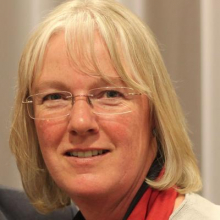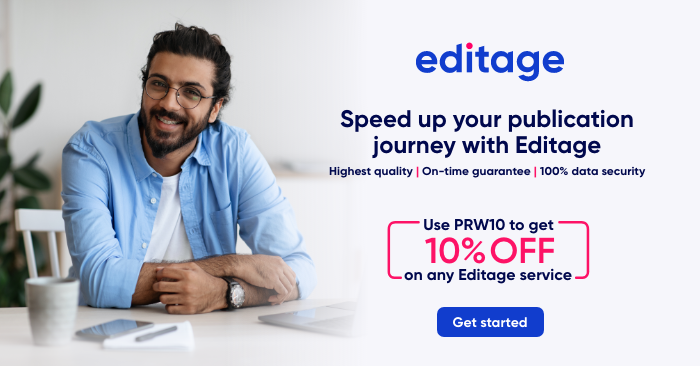"I highly recommend to all editors that they actively seek to diversify their reviewer pools." - Pippa Smart, Editor-in-Chief, Learned Publishing

I am in conversation with Pippa Smart on the role editors can play in fostering diversity and inclusion in peer review.

 Pippa Smart is an independent research communication and publishing consultant who runs her own company, PSP Consulting (www.pspconsulting.org/). Having worked in the academic and research publishing industry for over 30 years, Pippa has developed an incisive understanding of how the industry works. She uses her extensive experience and knowledge to advise publishers in the development of their publishing programs and runs customized training programs on topics such as editorial skills, journal business development, and copyright.
Pippa Smart is an independent research communication and publishing consultant who runs her own company, PSP Consulting (www.pspconsulting.org/). Having worked in the academic and research publishing industry for over 30 years, Pippa has developed an incisive understanding of how the industry works. She uses her extensive experience and knowledge to advise publishers in the development of their publishing programs and runs customized training programs on topics such as editorial skills, journal business development, and copyright.
Following a degree in Publishing and Anthropology from Oxford Brookes University, Pippa worked for several publishers including Cambridge University Press, Blackwell Science, and CABI where the roles she undertook included production, technical development, and editorial and strategic management. She was Head of Publishing at International Network for the Availability of Scientific Publications (INASP), an information development charity, where she developed and implemented the publishing support program to provide consultancy services to publishers in developing countries.
She is also the Editor-in-Chief of Learned Publishing (onlinelibrary.wiley.com/journal/10.1002/(ISSN)1741-4857) the official journal of the Association of Learned and Professional Society Publishers (ALPSP). She was invited to become a Director for the World Association of Medical Editors in January 2020. Pippa has served as the President of European Association of Science Editors (EASE) and was a non-executive Director of Practical Action Publishing, the publishing arm of the charity Practical Action, for several years. She is also one of the editors of the Science Editors’ Handbook, a trusted guide used by digital and print editing professionals.
As someone who’s closely observed the publishing industry for over 30 years, how important do you think is diversity, equity, and inclusion when it comes to scholarly publishing; and, in particular, how a journal operates?
That’s a really good question, and a difficult one to answer. Thinking particularly of the editorial team (associate editors, editorial and advisory boards, etc.) it is harder to introduce diversity than we initially think, and although it has definitely improved over the past few decades, we still have a way to go.
Having trained editors for much of this time, I have been interested to notice how many women attend these courses, and I have noticed a definite increase over the years – and also the instances when I was the only woman in the room – which still happens. When it comes to diversity and inclusion more widely, the picture is less positive. Many journals allege a fully international focus for the research, but have nationally or regionally-focused editorial boards with perhaps a token editor from other regions. Journals publishing in non-EU and non-American regions are far better at diversity than we are.
Although diversity in all areas is to be encouraged, it is dependent of the vision and mission of the journals themselves. By this I mean that if a journal specifically aims to serve a local community then it should be expected that the majority of editors, authors and perhaps reviewers will be from that community. This is probably most relevant to humanities subjects rather than STEM areas. However more and more journals aim for fully international perspectives, and if this is the journal aim (e.g. to collect all quality research on publishing across the globe) then it is vital that it has appropriate diversity in all areas, otherwise it will not be fulfilling its vision.
You’d mentioned in one of your interviews (thegeyser.substack.com/p/interview-pippa-smart) that as the Editor-in-Chief of Learned Publishing, you are constantly working toward diversifying the authorship of the journal. Could you tell us more about that?
It is all very well to “talk the talk” but more important that we “walk the walk” – i.e. that we practice what we preach. I am not claiming to be anywhere near perfect in my own journal, but we do make efforts to ensure diversity in all areas. But it is not as simply as it might sound.
Last year we underwent a refresh of our editorial board, and increasing diversity was a top priority. Whilst we did improve inclusion in our board, we didn’t achieve the “revolution” that we had hoped for. The reason for this was that although we were specifically looking for increased regional diversity, we also needed editors whose vision and quality standards matched those of the journal. I’m sure there are many people out there, but it is tricky to find them. We reached out to our networks, but of course the fact that it was our networks making recommendations was a limiting factor. We looked at our author and reviewer listings, but this had the same problems. Once on board we are now faced with logistical problems – I am currently trying to fix an editorial board meeting that allows people from Korea to West coast USA to New Zealand to attend. Time travel anyone?
However, having said this, the benefits of increased inclusivity with a journal’s editorial team are greater than any problems. Bringing on a diversity of views challenges journals (and editors) to sense-check their assumptions and bias, and to also ensure that the vision of the journal is realistically matched with the operation of the journal.
When it comes to authors there are also problems and challenges. We include information about geographical spread of authors and articles in all our internal reports. Unfortunately we reject higher percentages of articles from “periphery” countries that we would like, but these rejections ensure we maintain the quality, which is important for our readership – they need to know they can trust what we have published to be of a certain standard. This is always a balancing act. However, we are much more prepared to work with authors to improve their articles if they come from these countries, and we can be somewhat more dismissive of articles if they come from the UK or the USA and fail to meet the required rigor of research and reporting.
It is an iterative process, but we hope that by monitoring what we receive and what we publish, and ensuring that we can always provide a recent example of positive action, we will be addressing the problems of diversity – without claiming to have them resolved.
As you’d rightly pointed out in an earlier interview, a common pain point of journal editors is the difficulty in finding good quality peer reviewers. Do you think this presents a challenge when it comes to diversification of the peer reviewer pool?
Unfortunately the answer is yes. Increasing the diversity of the reviewer pool has two main benefits. The first is entirely practical – researchers outside of the USA and Europe are more likely to say yes to a review invitation and more likely to deliver that review on time (not only my own experience, but also the Publons 2018 data). The second is that regional knowledge can be hugely important when trying to evaluate some research – whereas I have to trust the authors to be correct in their representation of what is happening in their countries, a local reviewer can use their knowledge to sense check.
However the down side of increasing diversification can be down to language – not only the reviewer struggling to articulate their opinions of the article, but also misunderstandings between what a non-native (English) speaker (NNS) has written by someone who is also a NNS. I also find that there can be a mis-match of standards between the editorial group and the reviewer. This can happen with any reviewer, but is more frequent when using a broader range of reviewers. For example I often find that Chinese reviewers are more critical than European, and often less constructive (i.e. suggesting what could be improved). This may be language but may also be a perception that our standards are higher than they are, or that we only accept articles that reach our standards at the outset, whereas in fact we often work closely with authors to improve their articles.
Having said this, I highly recommend to all editors that they actively seek to diversify their reviewer pools. There are a lot of researchers who are never asked but who have valuable opinions that we can use. At Learned Publishing I try to find and invite at least one new reviewer every month – someone who may not have heard of us (but has published on the right topic somewhere else), or someone from a country that is under-represented in the journal. It doesn’t always work, but at least we are stepping in the right direction.
As humans, we all harbor unconscious biases that may play a role in how we operate. How can journal editors consciously try to maintain objectivity?
I wish I had a perfect answer! The only way we can address our own internal biases is to constantly question what we do and why we do it, and to ask if there is another way or another opinion. Listening to opinions of reviewers and other editors is key to this, as is being aware of our own passions and opinions and trying to avoid them influencing our journals. Personally I find editorial issues very interesting, and some other areas of publishing very tedious. Therefore I know that this could influence my decisions. Editors can help this by either avoiding decision-making on articles which they know they will be either extremely positive about or extremely negative. But we also need to be aware that for many journals, it is the personality of the editors who shape the journal and can make it especially interesting and useful to its target community, so bias is not always a bad thing. (I hope I am biased in favour of quality research.) As the saying goes: question everything, trust nothing.
Thank you for speaking with us, Pippa!
Comments
You're looking to give wings to your academic career and publication journey. We like that!
Why don't we give you complete access! Create a free account and get unlimited access to all resources & a vibrant researcher community.

Subscribe to Journal Submission & Peer Review







